Inflammation in chest cavity. Pleurisy and Costochondritis: Understanding Chest Cavity Inflammation
What are the symptoms of pleurisy and costochondritis. How are these conditions diagnosed and treated. What causes inflammation in the chest cavity. When should you seek medical help for chest pain.
Understanding Pleurisy: Inflammation of the Chest Cavity Lining
Pleurisy, also known as pleuritis, is a condition characterized by inflammation of the pleura – the thin, double-layered membrane that surrounds the lungs and lines the chest cavity. This inflammation can cause sharp chest pain, particularly during breathing.
Key Symptoms of Pleurisy
- Sharp, stabbing chest pain that worsens with breathing
- Shortness of breath
- Dry cough
- Fever and chills in some cases
The pain associated with pleurisy typically intensifies when you take deep breaths, cough, sneeze, or move your upper body. In some cases, the pain may extend to the shoulder or back.
Common Causes of Pleurisy
Pleurisy can be triggered by various factors, including:
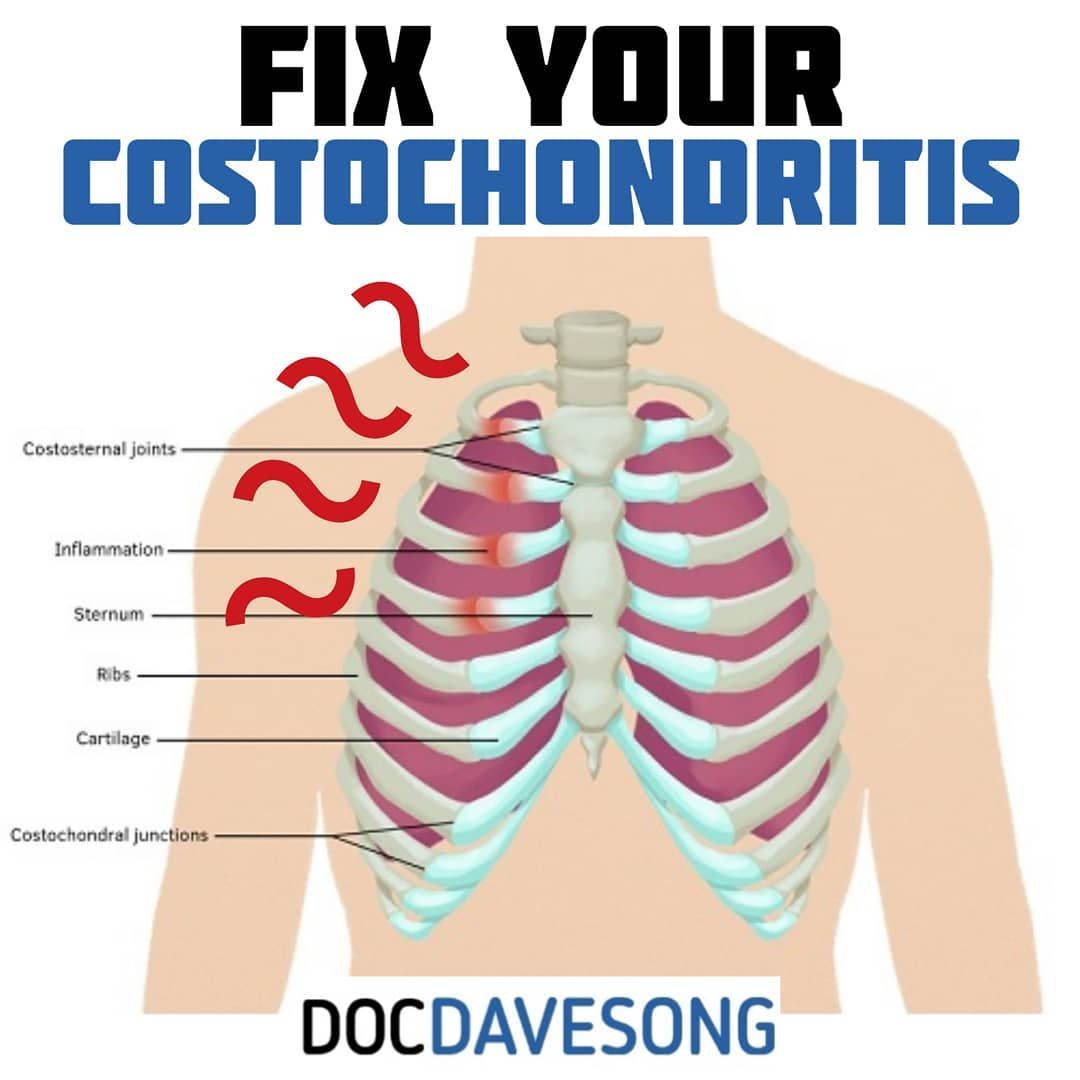
- Viral infections (such as influenza)
- Bacterial infections (like pneumonia)
- Autoimmune disorders (e.g., lupus, rheumatoid arthritis)
- Pulmonary embolism
- Chest injuries or trauma
- Certain medications
Is pleurisy a serious condition? While pleurisy itself is not typically life-threatening, it can be a symptom of more severe underlying conditions. Therefore, it’s crucial to seek medical attention if you experience persistent chest pain or difficulty breathing.
Costochondritis: Inflammation of the Rib Cartilage
Costochondritis is a condition characterized by inflammation of the cartilage that connects the ribs to the breastbone (sternum). This area, known as the costochondral joint, can become painful and tender when inflamed.
Distinguishing Features of Costochondritis
- Sharp, localized chest pain
- Tenderness when pressing on the affected area
- Pain that may worsen with physical activity or deep breathing
- Typically affects the upper ribs, particularly on the left side
How long does costochondritis typically last? The duration of costochondritis can vary significantly. Some cases may resolve within a few weeks, while others can persist for several months or even become chronic.

Tietze’s Syndrome: A Related Condition
Tietze’s syndrome is often confused with costochondritis due to their similar symptoms. However, there are some key differences:
- Tietze’s syndrome usually involves noticeable swelling of the affected area
- It typically affects younger adults (under 40)
- The swelling may persist even after the pain subsides
Despite these differences, the management and treatment approaches for Tietze’s syndrome are generally similar to those for costochondritis.
Diagnosing Chest Cavity Inflammation
Accurate diagnosis of pleurisy and costochondritis is crucial for appropriate treatment. Healthcare providers use a combination of methods to identify these conditions.
Diagnostic Approaches for Pleurisy
- Physical examination and medical history review
- Chest X-ray to visualize the lungs and pleura
- CT scan for more detailed imaging
- Blood tests to check for infections or autoimmune disorders
- Thoracentesis (removal and analysis of pleural fluid) if fluid buildup is present
How is pleurisy distinguished from other chest conditions? The characteristic sharp pain that worsens with breathing is a key indicator of pleurisy. However, healthcare providers must rule out other serious conditions such as heart attacks or pulmonary embolisms.
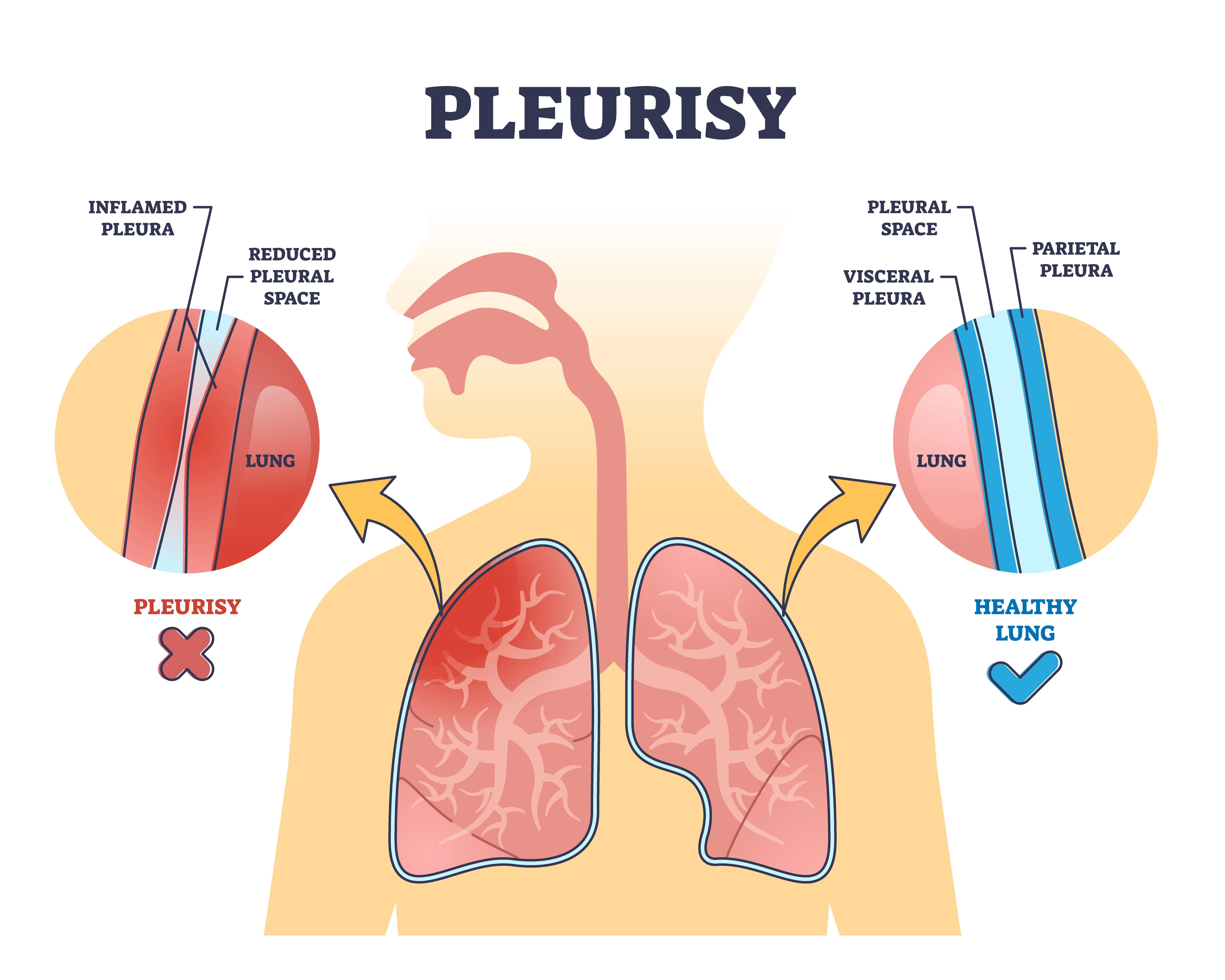
Diagnosing Costochondritis
The diagnosis of costochondritis typically involves:
- Physical examination, including palpation of the chest wall
- Review of symptoms and medical history
- Exclusion of other potential causes of chest pain
In some cases, additional tests may be performed to rule out other conditions:
- Electrocardiogram (ECG) to check heart function
- Blood tests to look for signs of inflammation or infection
- Chest X-ray to examine the bones and lungs
Why isn’t there a specific test for costochondritis? Costochondritis is primarily a clinical diagnosis based on symptoms and physical examination. There is no single definitive test to confirm its presence, making the exclusion of other conditions an important part of the diagnostic process.
Treatment Approaches for Chest Cavity Inflammation
The management of pleurisy and costochondritis aims to alleviate symptoms and address underlying causes when possible. Treatment strategies may vary depending on the specific condition and its severity.
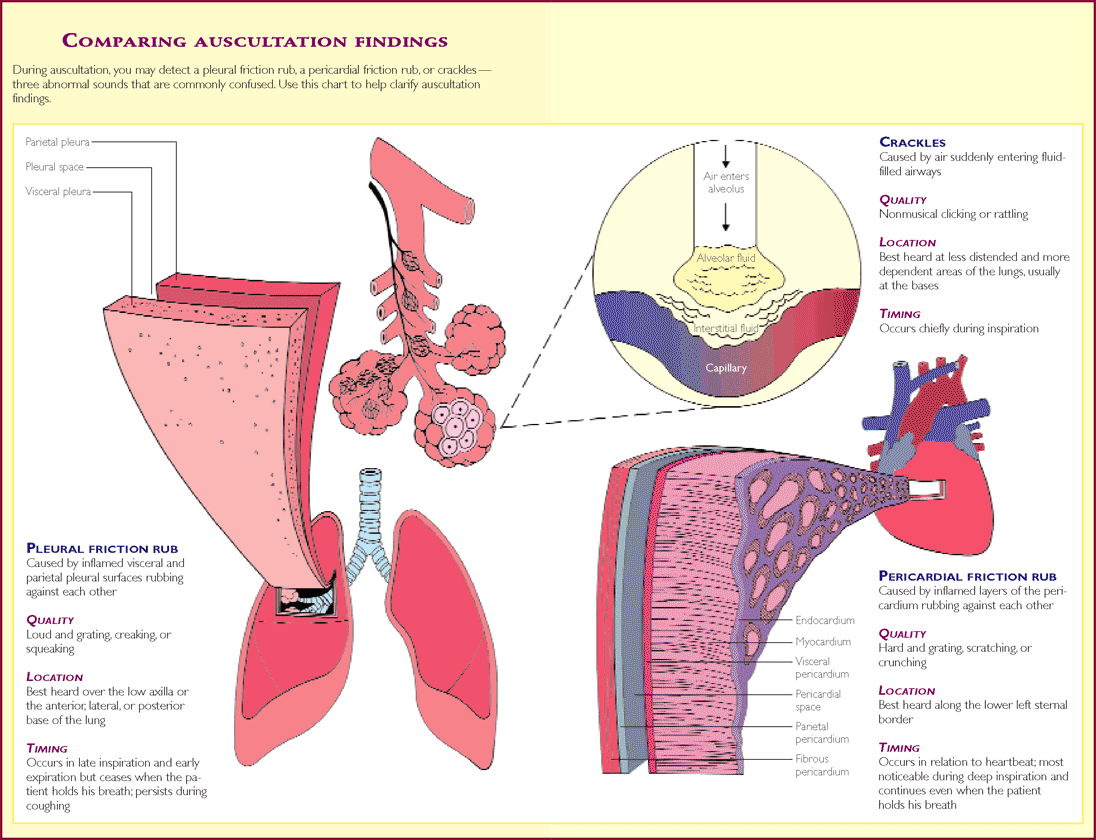
Managing Pleurisy
Treatment for pleurisy focuses on addressing the underlying cause and managing symptoms:
- Antibiotics for bacterial infections
- Antiviral medications for viral infections
- Pain relief medications (NSAIDs or acetaminophen)
- Cough suppressants to reduce strain on the chest
- Corticosteroids in some cases to reduce inflammation
In cases of pleural effusion (fluid buildup), drainage procedures may be necessary.
Treating Costochondritis
Costochondritis often improves on its own, but several approaches can help manage symptoms:
- Rest and avoidance of activities that exacerbate pain
- Over-the-counter pain relievers (NSAIDs or acetaminophen)
- Application of heat or ice to the affected area
- Gentle stretching exercises
- In severe cases, corticosteroid injections may be considered
Can physical therapy help with costochondritis? Physical therapy can be beneficial for some individuals with costochondritis. Techniques such as gentle stretching, postural correction, and strengthening exercises may help alleviate symptoms and prevent recurrence.

Preventing Recurrence and Managing Chronic Cases
While not all cases of chest cavity inflammation can be prevented, certain strategies may help reduce the risk of recurrence or manage chronic conditions.
Strategies for Pleurisy Prevention
- Maintaining good overall health and a strong immune system
- Getting vaccinated against influenza and pneumococcal infections
- Prompt treatment of respiratory infections
- Managing underlying conditions (e.g., autoimmune disorders)
Managing Chronic Costochondritis
For individuals with recurring or chronic costochondritis, long-term management strategies may include:
- Regular low-impact exercise to improve posture and chest flexibility
- Stress reduction techniques (e.g., meditation, yoga)
- Ergonomic adjustments to reduce strain on the chest area
- Ongoing pain management under medical supervision
Is it possible to completely prevent costochondritis recurrence? While it may not be possible to guarantee prevention of recurrence, adopting healthy lifestyle habits and being mindful of activities that strain the chest can significantly reduce the risk.

When to Seek Medical Attention for Chest Pain
Chest pain can be a symptom of various conditions, ranging from mild to life-threatening. It’s crucial to know when to seek immediate medical attention.
Red Flags for Immediate Medical Care
- Sudden, severe chest pain
- Chest pain accompanied by shortness of breath, nausea, or sweating
- Pain that radiates to the arm, jaw, or back
- Chest pain associated with dizziness or fainting
- Any chest pain in individuals with a history of heart disease or high risk factors
How can you differentiate between harmless chest pain and a potential heart attack? While it can be challenging to distinguish between different causes of chest pain, heart attack pain is often described as a feeling of pressure or squeezing in the chest. It may be accompanied by other symptoms like shortness of breath, nausea, or pain radiating to other parts of the upper body. When in doubt, it’s always safer to seek immediate medical attention.
Follow-up Care for Diagnosed Conditions
For individuals diagnosed with pleurisy or costochondritis, follow-up care is important:

- Attend all scheduled follow-up appointments
- Report any changes in symptoms or new developments
- Adhere to prescribed treatment plans
- Discuss any concerns or questions with healthcare providers
Regular communication with healthcare providers ensures proper management of these conditions and helps prevent complications or recurrence.
Living with Chest Cavity Inflammation: Lifestyle Adjustments
Adapting your lifestyle can significantly impact the management of pleurisy and costochondritis, potentially improving quality of life and reducing symptom severity.
Dietary Considerations
While there’s no specific diet for pleurisy or costochondritis, certain dietary choices may help manage inflammation:
- Incorporate anti-inflammatory foods (e.g., fatty fish, berries, leafy greens)
- Reduce intake of processed foods and added sugars
- Stay hydrated to support overall health
- Consider omega-3 supplements after consulting with a healthcare provider
Can dietary changes alone cure pleurisy or costochondritis? While dietary modifications can support overall health and potentially reduce inflammation, they are not a cure for these conditions. They should be viewed as part of a comprehensive management plan that includes medical treatment when necessary.
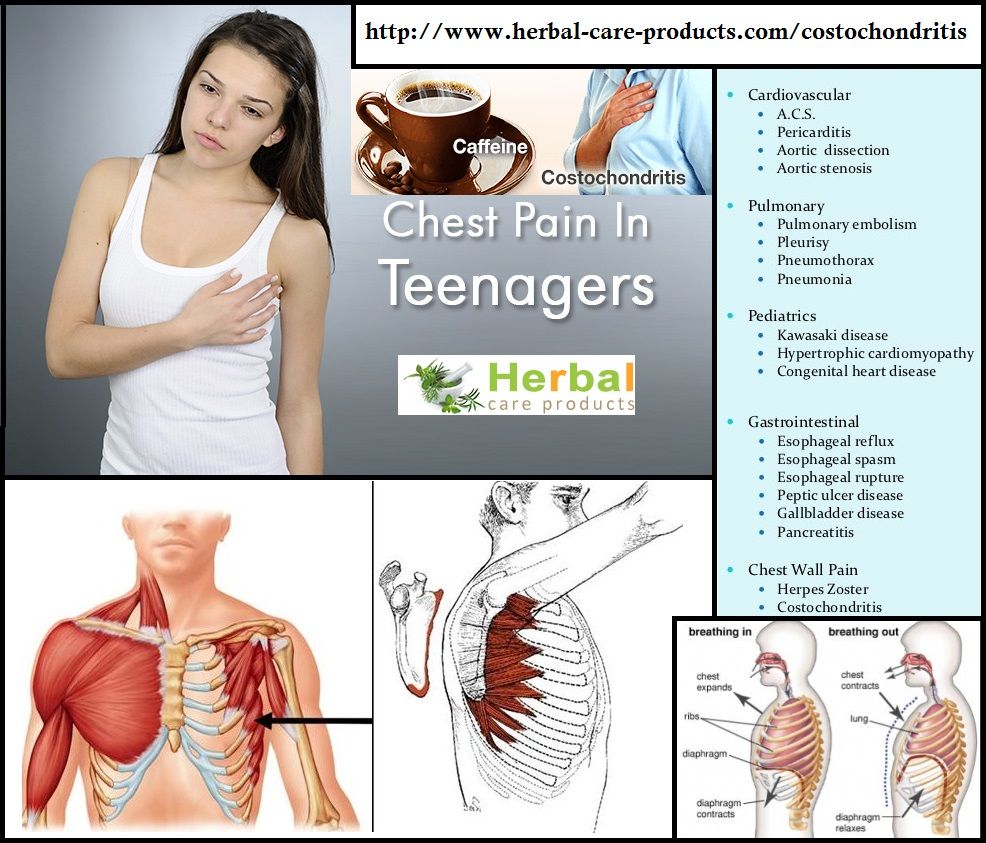
Exercise and Physical Activity
Appropriate physical activity can be beneficial, but it’s important to approach exercise cautiously:
- Start with low-impact activities (e.g., walking, swimming)
- Gradually increase intensity as tolerated
- Avoid exercises that strain the chest area during flare-ups
- Incorporate gentle stretching and breathing exercises
- Consider working with a physical therapist for a tailored exercise plan
How soon can you return to normal activities after a bout of pleurisy or costochondritis? The timeline for returning to normal activities varies depending on the severity of the condition and individual factors. It’s crucial to listen to your body and follow your healthcare provider’s guidance. Gradually reintroducing activities as symptoms improve is often recommended.
Stress Management and Mental Health
Chronic pain conditions can take a toll on mental health. Implementing stress management techniques can be beneficial:
- Practice relaxation techniques (e.g., deep breathing, progressive muscle relaxation)
- Engage in mindfulness or meditation
- Seek support from friends, family, or support groups
- Consider professional counseling if needed
Addressing mental health alongside physical symptoms can contribute to better overall management of chest cavity inflammation.

Emerging Research and Future Directions
The field of chest cavity inflammation continues to evolve, with ongoing research aiming to improve understanding, diagnosis, and treatment of conditions like pleurisy and costochondritis.
Advances in Diagnostic Techniques
Researchers are exploring new methods to enhance the accuracy and efficiency of diagnosing chest cavity inflammation:
- Advanced imaging techniques for more precise visualization of inflammation
- Biomarker identification for early detection and monitoring of inflammatory conditions
- Machine learning algorithms to assist in differential diagnosis
How might these advances impact patient care? Improved diagnostic techniques could lead to earlier detection, more targeted treatments, and better monitoring of disease progression, potentially improving outcomes for patients with chest cavity inflammation.
Novel Treatment Approaches
Ongoing research is investigating new therapeutic strategies:
- Targeted anti-inflammatory medications with fewer side effects
- Regenerative medicine approaches for cartilage repair in costochondritis
- Non-invasive pain management techniques
- Personalized treatment plans based on genetic and environmental factors
These emerging approaches hold promise for more effective and personalized management of chest cavity inflammation in the future.
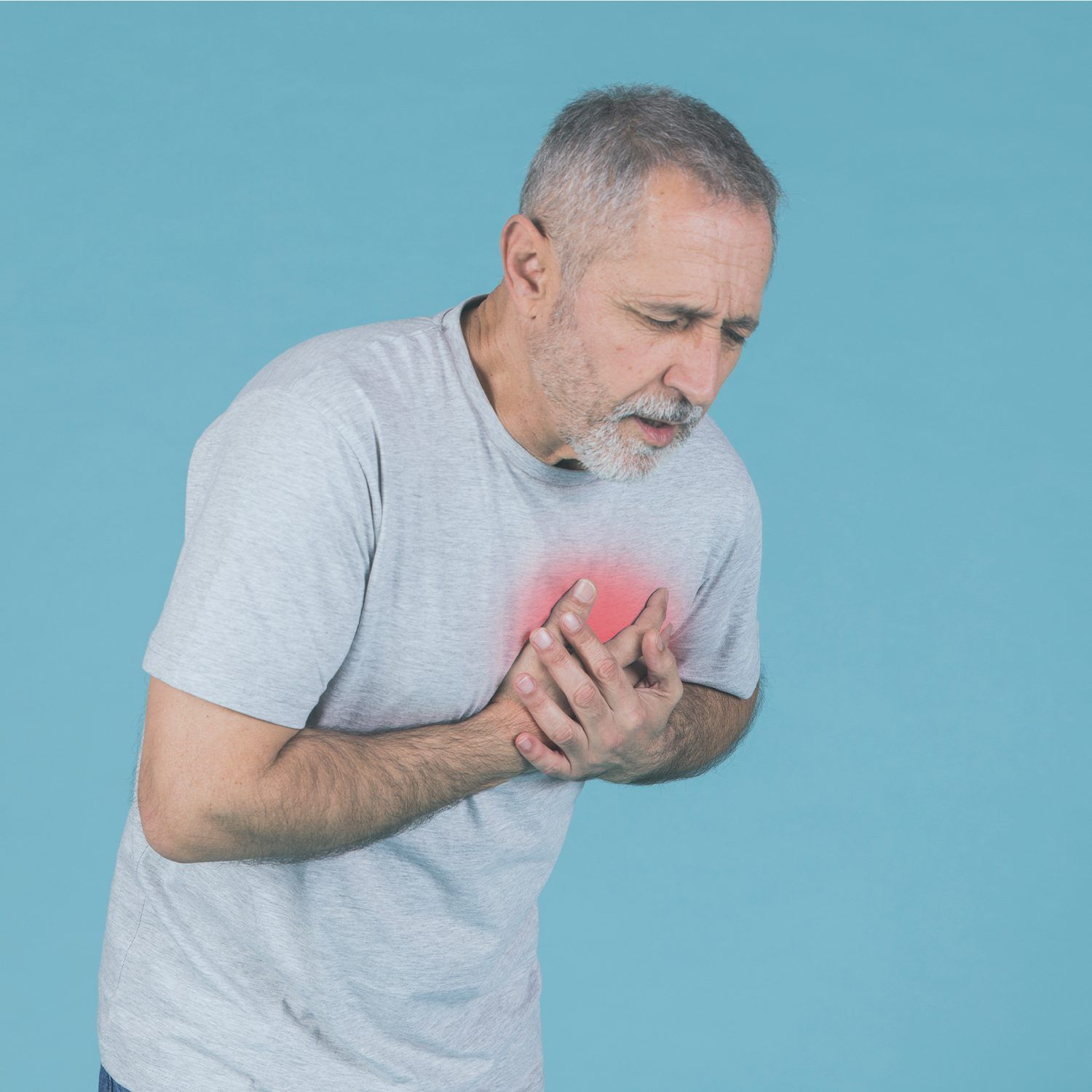
Long-term Impact Studies
Researchers are also focusing on understanding the long-term effects of chronic chest cavity inflammation:
- Impact on overall lung function and respiratory health
- Potential links to other systemic conditions
- Quality of life outcomes in patients with recurrent or chronic inflammation
These studies aim to provide a more comprehensive understanding of the broader implications of chest cavity inflammation, potentially informing future prevention and management strategies.
As research in this field progresses, individuals affected by pleurisy, costochondritis, and related conditions may benefit from improved diagnostic accuracy, more effective treatments, and better long-term management strategies. Staying informed about these developments and discussing them with healthcare providers can help patients make well-informed decisions about their care.
Costochondritis | NHS inform
Costochondritis is the medical term for inflammation of the cartilage that joins your ribs to your breastbone (sternum). This area is known as the costochondral joint.
Cartilage is tough but flexible connective tissue found throughout the body, including in the joints between bones. It acts as a shock absorber, cushioning the joints.
Costochondritis may improve on its own after a few weeks, although it can last for several months or more. The condition doesn’t lead to any permanent problems, but may sometimes relapse.
Tietze’s syndrome
Costochondritis may be confused with a separate condition called Tietze’s syndrome. Both conditions involve inflammation of the costochondral joint and can cause very similar symptoms.
However, Tietze’s syndrome is much less common and often causes chest swelling, which may last after any pain and tenderness has gone.
Costochondritis also tends to affect adults aged 40 or over, whereas Tietze’s syndrome usually affects young adults under 40.
As the conditions are very similar, most of the information below also applies to Tietze’s syndrome.
Signs and symptoms
When the costochondral joint becomes inflamed it can result in sharp chest pain and tenderness, which may develop gradually or start suddenly.
The pain may be made worse by:
- a particular posture – such as lying down
- pressure on your chest – such as wearing a seatbelt or hugging someone
- deep breathing, coughing and sneezing
- physical activity
When to seek medical help
It can be difficult to tell the difference between the chest pain associated with costochondritis and pain caused by more serious conditions, such as a heart attack.
However, a heart attack usually causes more widespread pain and additional symptoms, such as breathlessness, nausea and sweating.
If you, or someone you’re with, experiences sudden chest pain and you think there’s a possibility it could be a heart attack, dial 999 immediately and ask for an ambulance.
If you’ve had chest pain for a while, don’t ignore it. Make an appointment to see your GP so they can investigate the cause.
Causes of costochondritis
Inflammation is the body’s natural response to infection, irritation or injury.
It’s not known exactly why the costochondral joint becomes inflamed, but in some cases it’s been linked to:
- severe coughing – which strains your chest area
- an injury to your chest
- physical strain from repeated exercise or sudden exertion that you’re not used to – such as moving furniture
- an infection – including respiratory tract infections (RTIs) and wound infections
- wear and tear – your chest moves in and out 20 to 30 times a minute, and over time this motion can lead to discomfort in these joints
Diagnosing costochondritis
If you have symptoms of costochondritis, your GP will examine and touch the upper chest area around your costochondral joint. They’ll ask you when and where your pain occurs and look at your recent medical history.
Before a diagnosis can be confirmed, some tests may need to be carried out to rule out other possible causes of your chest pain.
These may include:
- an electrocardiogram (ECG) – which records the rhythms and electrical activity of your heart
- a blood test to check for signs of underlying inflammation
- a chest X-ray
If no other condition is suspected or found, a diagnosis of costrochondritis may be made.
Treating costochondritis
Costochondritis often gets better after a few weeks, but self-help measures and medication can manage the symptoms.
Self-help
Costochondritis can be aggravated by any activity that places stress on your chest area, such as strenuous exercise or even simple movements like reaching up to a high cupboard.
Any activity that makes the pain in your chest area worse should be avoided until the inflammation in your ribs and cartilage has improved.
You may also find it soothing to regularly apply heat to the painful area – for example, using a cloth or flannel that’s been warmed with hot water.
Painkillers
Painkillers, such as paracetamol, can be used to ease mild to moderate pain.
Taking a type of medication called a non-steroidal anti-inflammatory drug (NSAID) – such as ibuprofen and naproxen – two or three times a day can also help control the pain and swelling.
Aspirin is also a suitable alternative, but shouldn’t be given to children under 16 years old.
These medications are available from pharmacies without a prescription, but you should make sure you carefully read the instructions that come with them before use.
NSAIDs aren’t suitable for people with certain health conditions, including:
- asthma
- stomach ulcers
- high blood pressure
- kidney or heart problems
Contact your GP if your symptoms get worse despite resting and taking painkillers, as you may benefit from treatment with corticosteroids.
Corticosteroid injections
Corticosteroids are powerful medicines that can help reduce pain and swelling.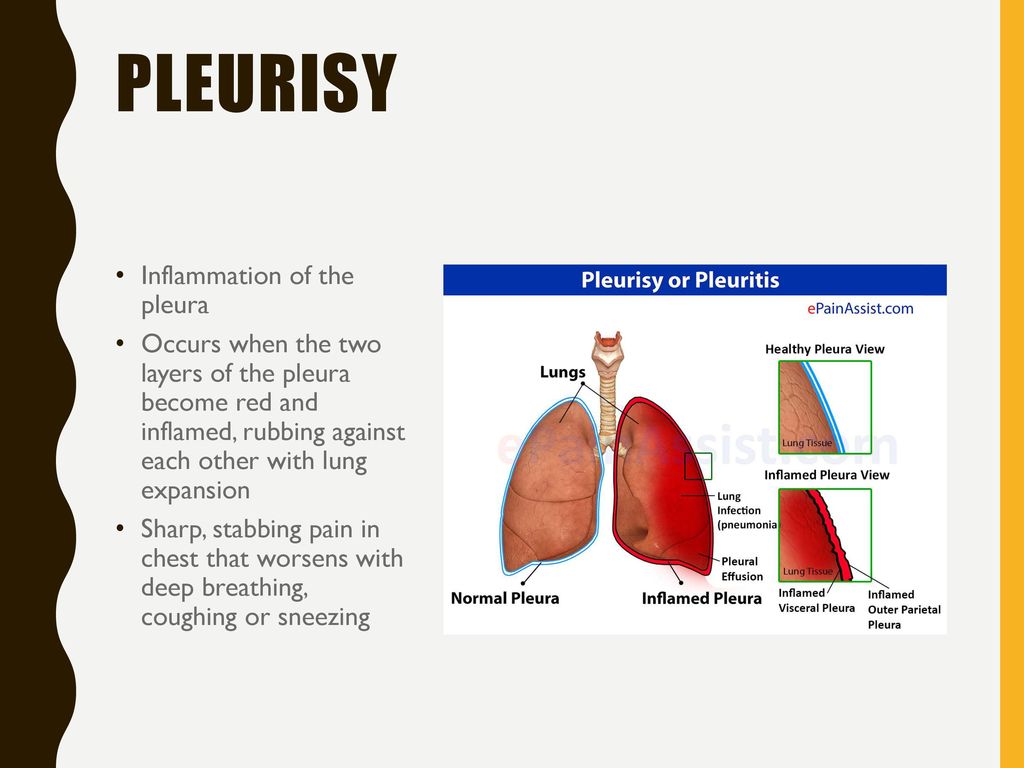 They can be injected into and around your costochondral joint to help relieve the symptoms of costochondritis.
They can be injected into and around your costochondral joint to help relieve the symptoms of costochondritis.
Corticosteroid injections may be recommended if your pain is severe, or if NSAIDs are unsuitable or ineffective.
They may be given by your GP, or you may need to be referred to a specialist called a rheumatologist.
Having too many corticosteroid injections can damage your costochondral joint, so you may only be able to have this type of treatment once every few months if you continue to experience pain.
Transcutaneous electrical nerve stimulation (TENS)
TENS is a method of pain relief where a mild electric current is delivered to the affected area using a small, battery-operated device.
The electrical impulses can reduce the pain signals going to the spinal cord and brain, which may help relieve pain and relax muscles.
They may also stimulate the production of endorphins, which are the body’s natural painkillers.
Although TENS may be used to help relieve pain in a wide range of conditions, it doesn’t work for everyone.
There isn’t enough good-quality scientific evidence to say for sure whether TENS is a reliable method of pain relief. Speak to your GP if you’re considering TENS.
Read more about transcutaneous electrical nerve stimulation (TENS).
Costochondritis — Symptoms, Causes, Tests, and Treatment for Costochondritis — from WebMD
Written by WebMD Editorial Contributors
- What Is Costochondritis?
- Costochondritis Causes
- Costochondritis Symptoms
- Costochondritis Risk Factors
- Costochondritis Diagnosis
- Costochondritis Treatment and Home Remedies
- Costochondritis Prevention
- Costochondritis Outlook
- More
Costochondritis is inflammation of the areas where your upper ribs join with the cartilage that holds them to your breastbone. These areas are called costochondral junctions. The condition causes chest pain, but it’s typically harmless and usually goes away without any treatment. But any chest pain in adults should be taken seriously, so you should be examined and tested for heart disease.
But any chest pain in adults should be taken seriously, so you should be examined and tested for heart disease.
A rare condition called Tietze syndrome is often referred to as costochondritis, but the two are distinct conditions. You can tell the difference by the following:
Tietze syndrome usually comes on all of a sudden, with chest pain spreading to your arms or shoulder and lasting several weeks.
Tietze syndrome causes swelling at the painful area (where your ribs and breastbone meet).
Doctors don’t know exactly why costochondritis happens, but they do know that some things can lead to it:
- Repeated minor trauma to your chest wall
- Overuse of your arms
- Arthritis. Costochondritis can sometimes be a sign of osteoarthritis, rheumatoid arthritis, ankylosing spondylitis, or other conditions that affect your cartilage.

- Tumors. These can move from joints and other parts of your body and settle in your chest.
- Respiratory infections caused by viruses
- Bacterial infections, especially in people who use IV drugs or have had surgery near their upper chest
- Fungal infections (in rare cases)
Chest pain linked to costochondritis usually comes on after exercise, minor trauma, or an upper respiratory infection.
- Sharp pain in the front of your chest, near where your breastbone and ribs meet, typically on the left side. It may spread to your back or belly.
- Pain when you take a deep breath or cough. It gets better when you stop moving or your breathing is quieter.
- Tenderness when you press on your rib joints. If you don’t have this tenderness, you probably don’t have costochondritis.
- If costochondritis happens because of an infection after surgery, you’ll have redness, swelling, or pus discharge at the site of the surgery.

Call your doctor if you have any of the following:
- Trouble breathing
- High fever
- Signs of infection such as redness, pus, and increased swelling at the rib joints
- Continuing or worsening pain despite medication
- Nausea
- Sweating
- Dizziness
Go to a hospital’s emergency room if you have a hard time breathing or any of the following. They’re not usually caused by costochondritis:
- High fever that doesn’t get better with fever reducers such as acetaminophen or ibuprofen
- Signs of infection at the tender spot, such as pus, redness, increased pain, and swelling
- Persistent chest pain of any type when you also have nausea, sweating, or pain in your left arm.
 These may be signs of a heart attack. If you’re not sure what’s causing your chest pain, go to the emergency room.
These may be signs of a heart attack. If you’re not sure what’s causing your chest pain, go to the emergency room.
Costochondritis is a common cause of chest pain in children and adolescents. It accounts for 10% to 30% of all chest pain in children. Annually, doctors see about 650,000 cases of chest pain in people ages 10 to 21. The peak age for the condition is ages 12-14.
Kids who often carry heavy book bags over one shoulder can be more likely to develop costochondritis.
In adults, costochondritis affects women more than men (70% vs. 30%).
There is no specific test for diagnosing costochondritis. To rule out a more serious cause of your chest pain related to your heart or lungs, your doctor will probably start with tests like an echocardiogram (ECG), chest X-rays, and blood test for heart damage, among others.
If those tests come back normal, they’ll likely see if you have tenderness in any of your rib joints, usually over the fourth to sixth ribs.
If you’ve had sternum (breastbone) surgery or are at risk for heart disease, they may recommend getting a test to see if infection is the cause of your chest pain. Doctors will:
- Look for signs of infection such as redness, swelling, pus, and drainage at the site of surgery
- Recommend a more sophisticated imaging study of the chest called a gallium scan, which will show an increase in the radioactive material gallium
- Check your white blood cell count to see if it is high, a sign of infection
- Recommend a chest X-ray if pneumonia might be a cause of your chest pain
Home Remedies for Costochondritis
These home remedies may provide relief from costochondritis:
- Over-the-counter pain relievers such as nonsteroidal anti-inflammatory medications (NSAIDs) like ibuprofen or naproxen as needed
- Using local heat or ice to relieve pain
- Avoiding unnecessary exercise or activities that make the symptoms worse; avoiding contact sports until there is improvement in symptoms, and then returning to normal activities only as tolerated
- Doing stretching exercises
Medications for Costochondritis
Your doctor may suggest the following:
- Prescription-strength NSAIDs.

- A local anesthetic and steroid injection in the area that is tender if normal activities become very painful and the pain doesn’t get better with medicine.
- Narcotics like hydrocodone/acetaminophen (Norco, Vicodin) or oxycodone/acetaminophen (Percocet, Roxicet, Tylox) can help with extreme pain, but, as with any narcotics, there’s danger of becoming addicted to them.
- Steroids. Your doctor can give you a corticosteroid shot directly into a painful joint, but that’s considered something of a last resort.
- Tricyclic antidepressants or cyclic antidepressants like amitriptyline can help ease pain, but they also can have side effects, like weight gain and drowsiness.
- Antiseizure drugs, usually gabapentin (Neurontin), are typically used to treat epilepsy, but they also may help with costochondritis.
- Infectious (bacterial or fungal) costochondritis should be treated with IV antibiotics.
 Afterward, antibiotics by mouth or by IV should be continued for another 2 to 3 weeks. You should see a doctor during recovery, and then once a year.
Afterward, antibiotics by mouth or by IV should be continued for another 2 to 3 weeks. You should see a doctor during recovery, and then once a year.
Surgery for Costochondritis
You may need surgery to remove the sore cartilage if other treatments don’t help. Your doctor can refer you to a surgeon.
Because inflammatory costochondritis has no definite cause, there is no good way to prevent it.
Noninfectious costochondritis will go away on its own, with or without anti-inflammatory treatment. Most people will recover fully.
Infectious costochondritis responds well to IV antibiotics and surgery, but recovery may take a long time.
Top Picks
What is chest myositis? How does it occur? What muscles are affected?
Myositis of the muscles of the chest is an inflammatory process in the muscles of the chest, in which there are painful indurations (they are foci of inflammation) and pain. The thorax is an anatomical formation that consists of the sternum, ribs, spine, and associated muscles. Myositis is an inflammatory process that, by definition, affects muscle tissue. Although, in some cases, it can spread to other places, for example, to the pleura – a film of connective tissue lining the chest from the inside.
The thorax is an anatomical formation that consists of the sternum, ribs, spine, and associated muscles. Myositis is an inflammatory process that, by definition, affects muscle tissue. Although, in some cases, it can spread to other places, for example, to the pleura – a film of connective tissue lining the chest from the inside.
What causes myositis of the pectoral muscles?
Various diseases can lead to the inflammatory process. Main causes:
- Infections, among which influenza and SARS are in the lead. In this case, myositis is considered as a complication of an infectious disease.
- Parasitoses. Parasites that live in the body can also cause chest myositis. But this rarely happens.
- Poisoning with certain substances. Another fairly rare reason.
- Features of the profession. Some people are forced to stay in positions for long periods of time that cause damage to the pectoral muscles and the development of inflammation in them.
 This category includes violinists, pianists, drivers.
This category includes violinists, pianists, drivers. - Muscle injuries. Common causes: mechanical trauma, frequent convulsions.
- Bacterial infection. Causes the most severe form of myositis, when a focus of purulent inflammation occurs in the muscle tissue. This is manifested by severe pain, fever, deterioration, malaise. The infection can spread to the pleura, lungs, and other organs. The disease can develop after injuries, non-compliance with aseptic and antiseptic rules during medical procedures.
When you are worried about chest pains, it is difficult to immediately understand what their cause is. Often, first of all, suspicion falls not on myositis of the pectoral muscles, but on problems with the heart, spine, intercostal neuralgia. An experienced doctor will be able to figure out why the symptoms occurred and prescribe the right treatment.
What are the forms of thoracic myositis?
Thoracic myositis may be acute or chronic. In the acute form of the disease, rather severe chest pains are disturbing. If not treated, over time, the course of the pathology becomes chronic. The pain becomes not so strong, and the person often ceases to notice it at all. An aggravation occurs during a cold, a long stay in an uncomfortable position, a change in weather.
In the acute form of the disease, rather severe chest pains are disturbing. If not treated, over time, the course of the pathology becomes chronic. The pain becomes not so strong, and the person often ceases to notice it at all. An aggravation occurs during a cold, a long stay in an uncomfortable position, a change in weather.
Myositis of the chest can occur on the left or right, or on both sides. With left-sided localization, it can mimic heart disease.
There are also two specific chronic forms of the disease that affect different muscle groups: polymyositis and dermatomyositis.
Treatment of chest myositis
A neurologist prescribes the treatment of the disease individually for each patient.
First of all, you need to identify and eliminate the cause. If viruses are to blame, as a rule, specific antiviral treatment is not required. They carry out standard measures for a cold, after a while recovery occurs. Bacteria are fought with antibiotics, and parasites are fought with antiparasitics.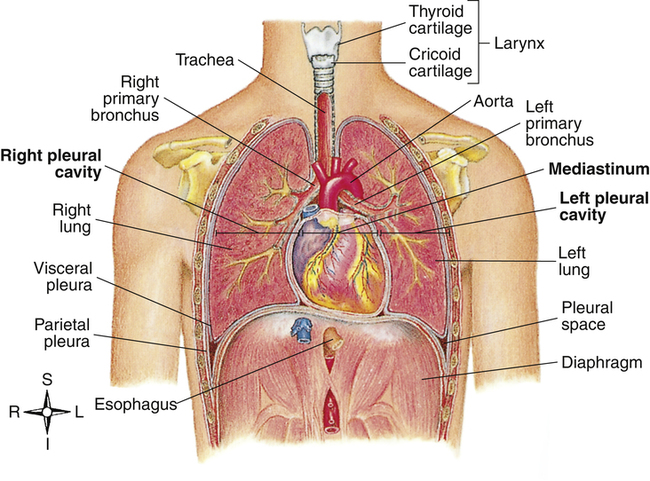 In case of chronic trauma, rest is recommended, then the correct organization of work and rest.
In case of chronic trauma, rest is recommended, then the correct organization of work and rest.
General principles for the treatment of various forms of chest myositis :
- In the acute form of the disease, rest must be ensured. Damaged muscles must be kept warm, usually the chest is wrapped in woolen cloth.
- To relieve pain, painkillers from the group of non-steroidal anti-inflammatory drugs are used: such as diclofenac, ibuprofen.
- In some forms of myositis, finalgon and other warming ointments have a good effect.
- When the temperature rises, antipyretic drugs are used.
- Physiotherapy, massage, physiotherapy exercises are also used.
In the purulent form of the disease, it is often necessary to resort to surgical treatment: the abscess is opened and cleaned.
We will call you back
Message sent!
expect a call, we will contact you as soon as possible
The main manifestations of myositis of the chest muscles are pain in the affected muscles and painful indurations that correspond to foci of inflammation. The disease can occur in two forms:
The disease can occur in two forms:
- In acute myositis the symptoms come on quickly, suddenly, usually during an infection, after prolonged muscle tension, trauma.
- In the chronic form of , the manifestations increase gradually, it can be the result of untreated acute inflammation in the muscles.
Characteristic symptoms of chest myositis
The main symptom of chest myositis is pain. Its intensity gradually increases. Pain is aggravated during awkward movements, deep breaths, prolonged stay in a tense uncomfortable position. When feeling the chest in the area of the affected muscles, pain is noted.
Sometimes swelling, swelling, redness of the skin can be found at the site of the lesion. This symptom is most characteristic of purulent myositis. At the same time, the patient feels weakness, malaise, his body temperature rises.
Protective muscle tension occurs – it helps to limit movement and reduce pain.
Pain in the muscles may disappear for several days, but then a relapse occurs, most often it is provoked by infections, hypothermia, trauma, stress.
Affected muscles become weak, in a chronic course they decrease in size over time – their atrophy develops.
How is chest myositis diagnosed?
Usually, the first thing a patient gets to see a therapist is because he does not know why he began to be disturbed by chest pains and other symptoms. Suspecting the neurological nature of the disease, the doctor refers the patient for a consultation with a neurologist.
A neurologist will ask you about your symptoms, when and how they started, how they have changed over time, what you have been sick with during your life, what chronic diseases you currently suffer from. A neurological examination will be performed. The doctor will press certain points on your chest to determine if there is any tenderness.
Further, to clarify the diagnosis and exclude other diseases, an examination will be prescribed, which may include the following diagnostic methods:

With what diseases is the differential diagnosis of signs of chest myositis carried out?
Similar chest pains and other symptoms described above can also occur with other diseases, such as:
- angina pectoris and other heart diseases;
- diseases of the lungs and pleura – a film of connective tissue that covers them;
- intercostal neuralgia;
- osteochondrosis of the thoracic spine.
Treatment of infections and inflammation of the mammary glands in the Vyborgsky district of St. Petersburg
In this article, we have described the most common diseases of the mammary glands. The material is for informational purposes only. If you are worried about any tightness in the chest or pain, be sure to consult a mammologist for a diagnostic test.
The material is for informational purposes only. If you are worried about any tightness in the chest or pain, be sure to consult a mammologist for a diagnostic test.
Orthopedist
Online appointment
Phones:
+7 (812) 30-888-03
+7 (812) 242-53-50
Address clinics: St. Petersburg, Vyborgsky district, Prospekt Prosveshcheniya metro station, Ozerki, st. Asafiev, 9, building 2, lit. A
Our doctors
Kasyanova Marina Nikolaevna
Surgeon, oncologist, mammologist, proctologist, doctor of ultrasound diagnostics, Ph.D.
Sergey Vladimirovich Borisov
Surgeon, pediatric surgeon, oncologist, mammologist, ultrasound doctor (children, adults)
Prices for services
- Mammologist’s consultation
- Procedures
Pay attention! Prices are for adult patients. Please see the Pediatrics section for the cost of children’s appointments.
| Primary appointment (examination, consultation) with a mammologist | 2,200 |
| Repeated appointment (examination, consultation) with a mammologist primary | 2,500 |
| Appointment (examination, consultation) with an oncologist (mammologist), Ph.D. repeated | 2 100 |
| 5100 | |
| Breast secretion sampling | 550 |
| Fine needle aspiration biopsy (FNA) of breast cyst (1 cyst), histology fee not included 9 0187 | 2100 |
Lactational mastitis
Most common a type of breast infection is lactational mastitis. With this condition, which occurs when a woman is breastfeeding, women’s nipples become cracked and sore, allowing bacteria from the baby’s mouth to enter the ducts and multiply rapidly in the milk. Sometimes the infection comes from a blocked milk duct. In both cases, the chest becomes hard, reddened, hot and sore.
Sometimes the infection comes from a blocked milk duct. In both cases, the chest becomes hard, reddened, hot and sore.
The doctor may also prescribe antibiotics and painkillers. In some cases, lactational mastitis progresses and forms an abscess, a more serious condition that may require drainage.
Non-lactational mastitis
Non-lactational mastitis is similar to lactational mastitis but occurs in non-breastfeeding women. In some cases, this condition occurs after a lumpetomy followed by radiation therapy in women with diabetes or in those who have reduced immune functions in the body.
Although rare, this condition is usually accompanied by high fever and headache and is treated with antibiotics. Consult your doctor for diagnosis and treatment.
Chronic subarreal abscess
Is a common infection of the breast, although it occurs infrequently. If an infection is found before an abscess develops, it can often be treated with antibiotics. Most often it is necessary to make an incision and drain the abscess.
Most often it is necessary to make an incision and drain the abscess.
Mastalgia (chest pain)
Classified as cyclic pain (associated with menstrual periods) or non-cyclic. The latter may come from the chest or may come from somewhere else, such as near the muscles or joints, felt in the chest. In some cases, pain can range from minor discomfort to severe. Many women with mastalgia worry more about the fear of cancer than the pain itself.
Cyclic chest pain
The most common type of chest pain is associated with the menstrual cycle and is almost always hormonal. Some women begin to experience pain during ovulation, which continues until the start of the menstrual cycle. The pain may be subtle or so severe that the woman cannot wear tight clothing or endure close contact of any kind. The pain may be felt in only one breast or in the area under the arm.
Doctors continue to study the role of hormones in cyclic mastalgia. One study showed that some women with cyclic mastalgia experienced a decrease in the ratio of progesterone to estrogen in the second half of their menstrual cycle.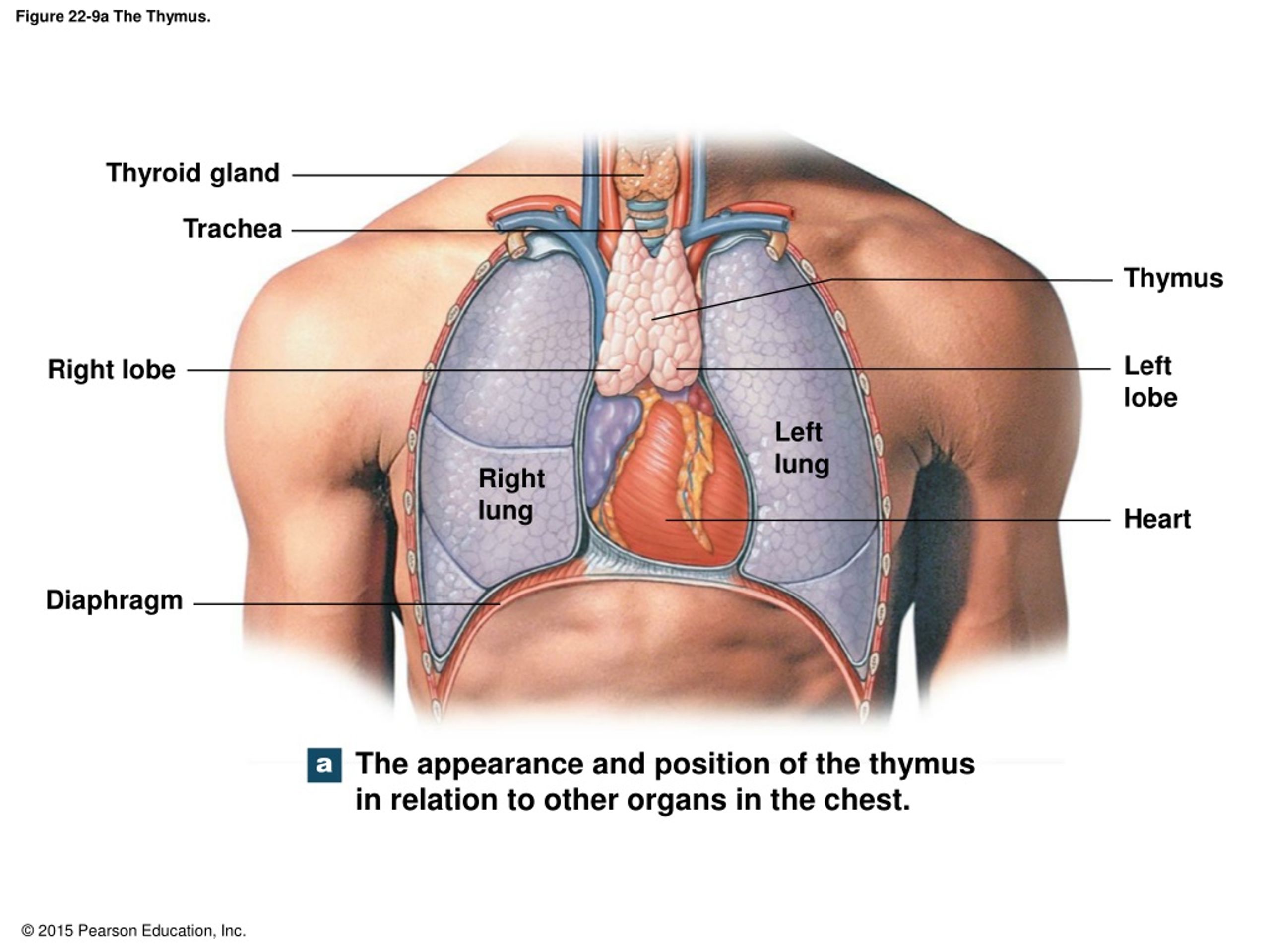 Other studies have shown that an abnormality in the hormone prolactin can affect breast pain. Hormones can also influence cyclical stress-related chest pain – sensations can increase or change in texture with hormone changes that occur during times of stress.
Other studies have shown that an abnormality in the hormone prolactin can affect breast pain. Hormones can also influence cyclical stress-related chest pain – sensations can increase or change in texture with hormone changes that occur during times of stress.
Hormones cannot give a general response to cyclic breast pain because the pain is often more severe in one breast than the other (steroids tend to affect both breasts equally).
Treatment includes:
- avoiding caffeine
- vitamin E
- low-fat diet
- In some cases, various additional hormones and hormone blockers are also prescribed. These may include:
- birth control pills
- Bromocriptine (which blocks prolactin in the hypothalamus)
- Danazol, a male hormone
- thyroid hormones
- Tamoxifen, an estrogen blocker
Noncyclic chest pain 9 0005
Non-cyclic chest pain rather unusual, distinct from cyclic mastalgia and does not change during the menstrual cycle.



 These may be signs of a heart attack. If you’re not sure what’s causing your chest pain, go to the emergency room.
These may be signs of a heart attack. If you’re not sure what’s causing your chest pain, go to the emergency room.
 Afterward, antibiotics by mouth or by IV should be continued for another 2 to 3 weeks. You should see a doctor during recovery, and then once a year.
Afterward, antibiotics by mouth or by IV should be continued for another 2 to 3 weeks. You should see a doctor during recovery, and then once a year. 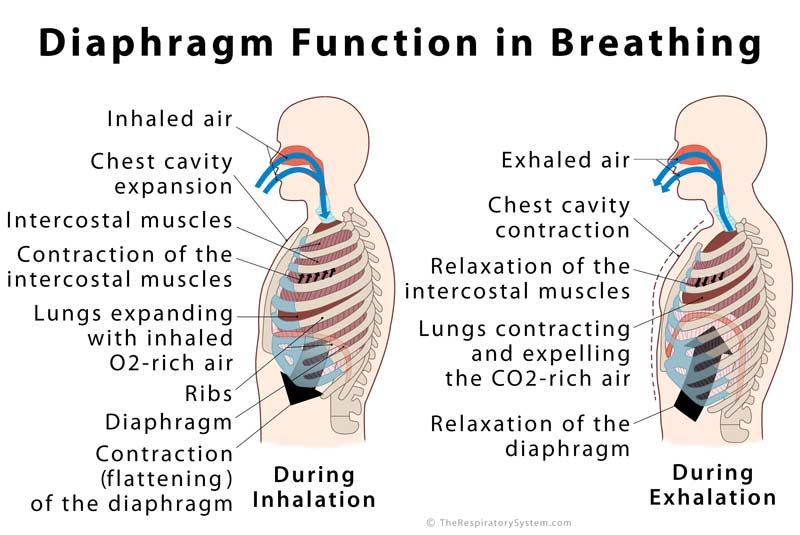 This category includes violinists, pianists, drivers.
This category includes violinists, pianists, drivers.